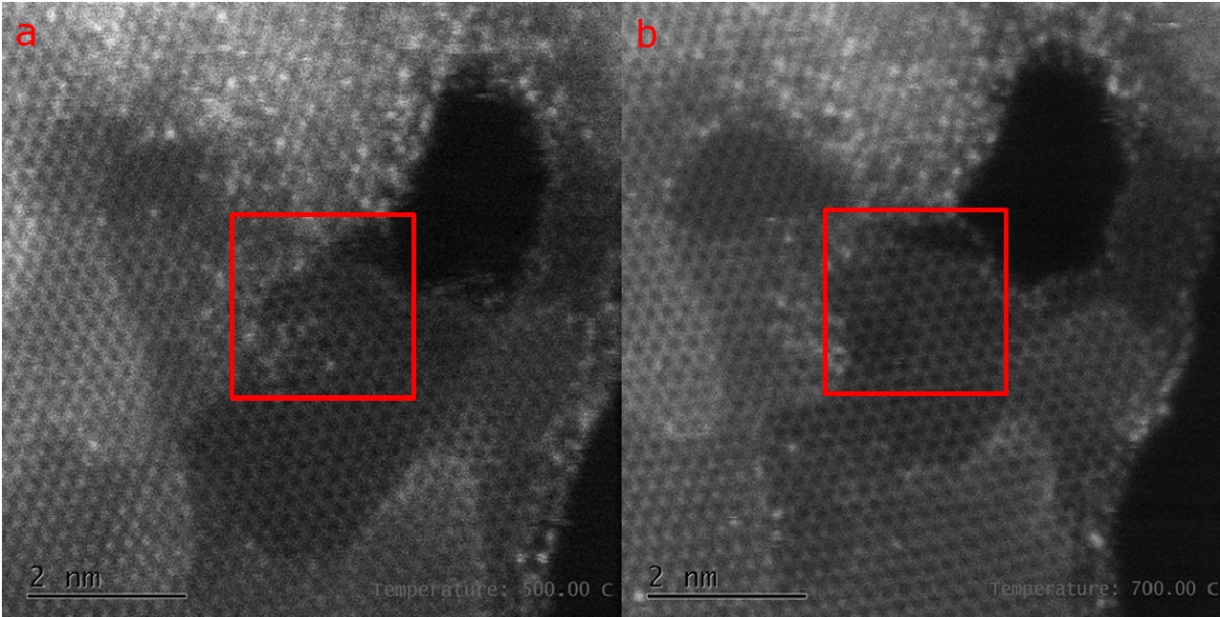Monitoring dynamics of defects and single metal atoms in functionalized graphene by temperature programmed in situ transmission electron microscopy
- Abstract number
- 147
- Presentation Form
- Submitted Talk
- Corresponding Email
- [email protected]
- Session
- Stream 1: EMAG - 2D Materials
- Authors
- Dr Rosa Arrigo (3), Dr Takeo Sasaki (1), Dr Manfred Erwin Schuster (2)
- Affiliations
-
1. JEOL
2. Johnson Matthey
3. Salford University
- Keywords
in-situ TEM, single site catalysis, graphene
- Abstract text
The reactivity of carbon materials in catalysis and electrocatalysis is due to the edges site terminations and point defects (vacancies, non 6-membered rings) on the basal planes of the graphene layers. These sites are often terminated by heteroatoms such as O, N, B, P which impart specific acid/base properties. Furthermore, these heteroatoms can be used as anchoring sites for metal atoms to prepare C-metal hybrid systems.
Single metal atom sites and point defects are key structural entities determining the performance of graphene-based catalysts. Not only do they co-participate in the catalytic turn-over, but the carbon defects can also be used to tailor the reactivity and selectivity of the immobilized metal species.
In this contribution we are concerned with the case of Fe on N-functionalized few-layer graphene which is widely investigated as alternative to platinum group metals systems in electro-catalytic applications such as the oxygen reduction reaction, the electrochemical CO2 reduction and the electrochemical NH3 synthesis.
We apply in-situ thermal programmed scanning transmission electron microscopy to monitor dynamics involving Fe single atoms and their stabilization on N functionalized few-layer graphene. This allows us to identify the nature of the defects initially present on N-functionalised graphene and their property to coordinate Fe atoms. Furthermore, we study how these structural defects change upon annealing in the presence and absence of metal atoms.
We will show a high mobility of both defects and metal atoms diffusing rapidly from one defect point to the other. Furthermore, we will show that the presence of metal atoms induces a stabilization of the graphene defects. This study is of relevance for the application of graphene-like materials for low and medium temperature catalysis and electrocatalysis.
Figure 1: temperature induced formation of vacancies on few layer N-doped graphene: 500°C (a) vs 700°C (b)

